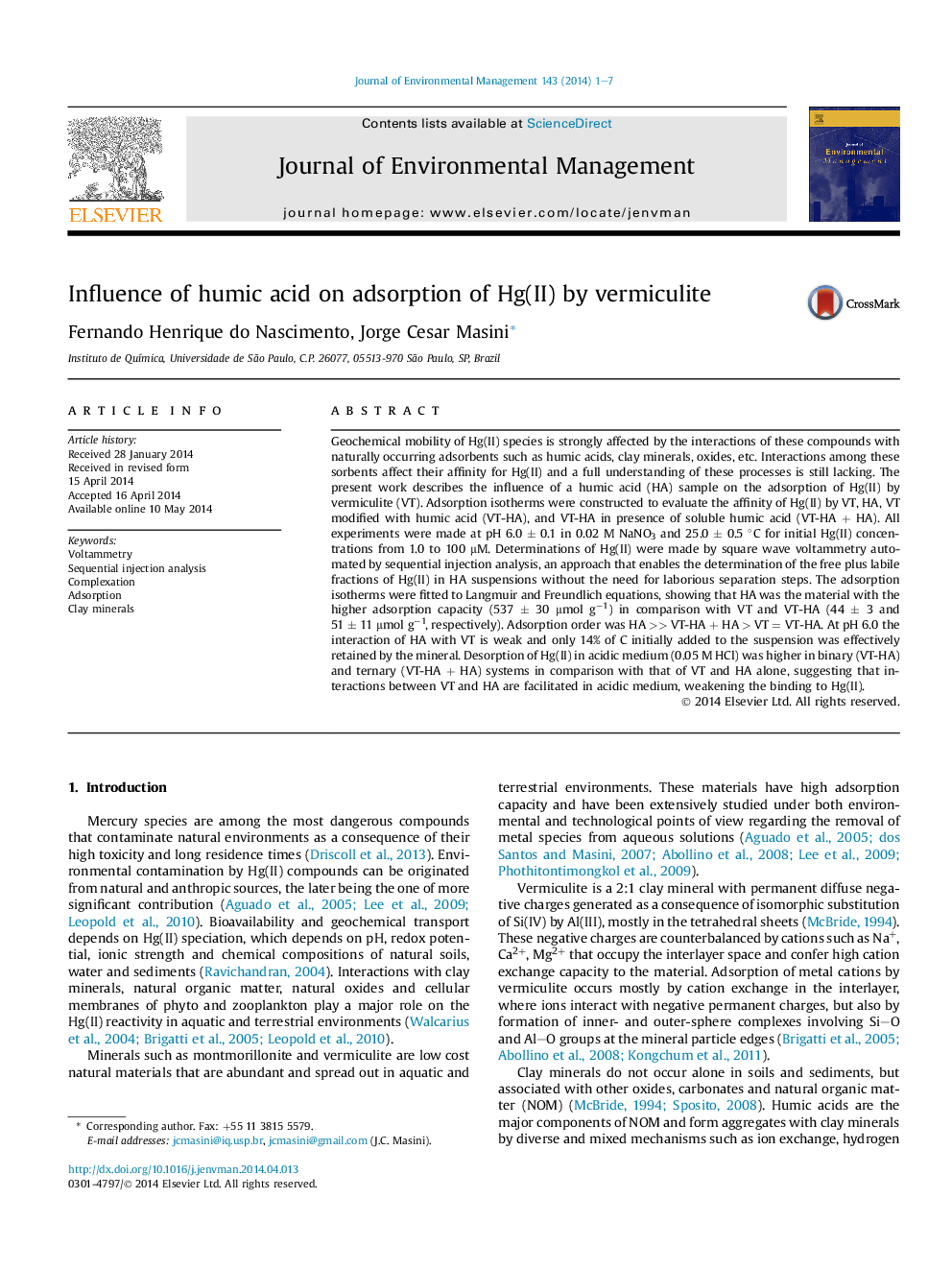| Article ID | Journal | Published Year | Pages | File Type |
|---|---|---|---|---|
| 1055747 | Journal of Environmental Management | 2014 | 7 Pages |
•Hg(II) binds more strongly to humic acid (HA) than to vermiculite (VT).•Humic acid in solution enhances the adsorption capacity of VT.•Interactions between HA and VT weaken the affinity between Hg(II) and HA.•Automated voltammetry enables direct determination of Hg(II) in the HA suspension.
Geochemical mobility of Hg(II) species is strongly affected by the interactions of these compounds with naturally occurring adsorbents such as humic acids, clay minerals, oxides, etc. Interactions among these sorbents affect their affinity for Hg(II) and a full understanding of these processes is still lacking. The present work describes the influence of a humic acid (HA) sample on the adsorption of Hg(II) by vermiculite (VT). Adsorption isotherms were constructed to evaluate the affinity of Hg(II) by VT, HA, VT modified with humic acid (VT-HA), and VT-HA in presence of soluble humic acid (VT-HA + HA). All experiments were made at pH 6.0 ± 0.1 in 0.02 M NaNO3 and 25.0 ± 0.5 °C for initial Hg(II) concentrations from 1.0 to 100 μM. Determinations of Hg(II) were made by square wave voltammetry automated by sequential injection analysis, an approach that enables the determination of the free plus labile fractions of Hg(II) in HA suspensions without the need for laborious separation steps. The adsorption isotherms were fitted to Langmuir and Freundlich equations, showing that HA was the material with the higher adsorption capacity (537 ± 30 μmol g−1) in comparison with VT and VT-HA (44 ± 3 and 51 ± 11 μmol g−1, respectively). Adsorption order was HA >> VT-HA + HA > VT = VT-HA. At pH 6.0 the interaction of HA with VT is weak and only 14% of C initially added to the suspension was effectively retained by the mineral. Desorption of Hg(II) in acidic medium (0.05 M HCl) was higher in binary (VT-HA) and ternary (VT-HA + HA) systems in comparison with that of VT and HA alone, suggesting that interactions between VT and HA are facilitated in acidic medium, weakening the binding to Hg(II).
